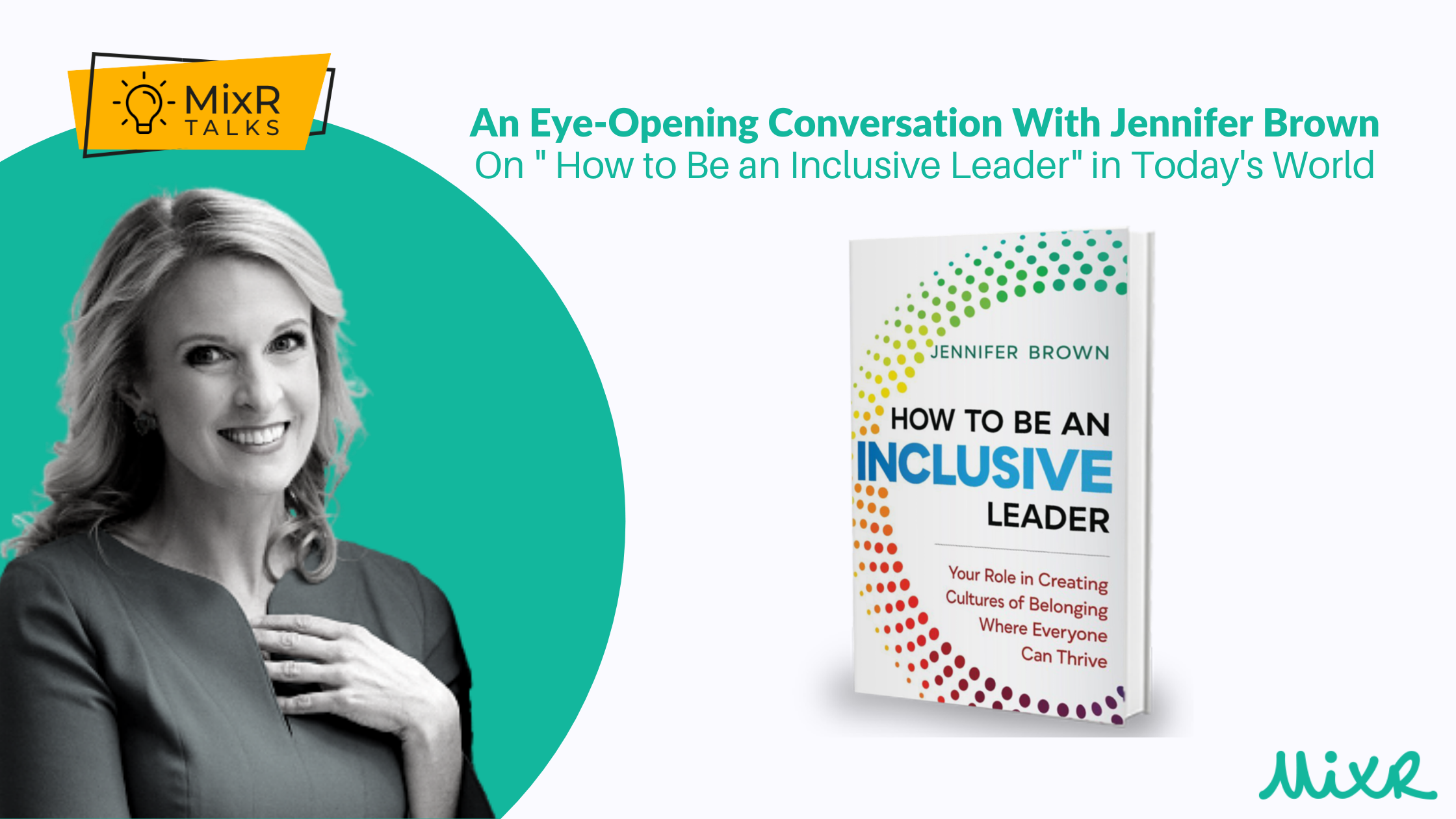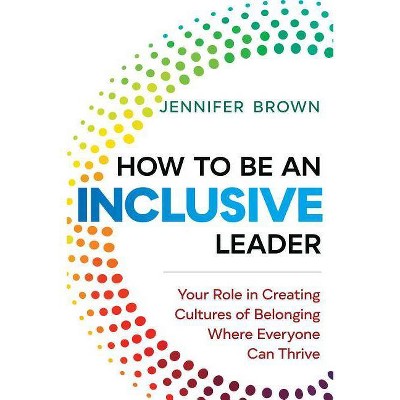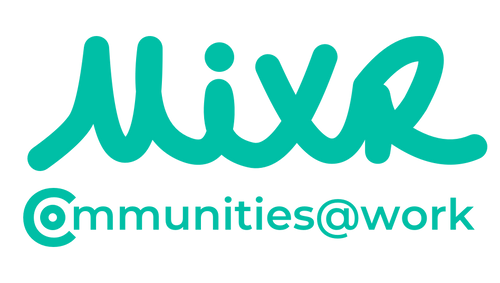
 This week, we’re excited to introduce Jennifer Brown, an award-winning entrepreneur, speaker, diversity and inclusion consultant and author. As the CEO and founder of Jennifer Brown Consulting, she advises companies - from Fortune 500 to nonprofit - on how to build more inclusive workplaces where everyone is welcomed, valued, respected and heard. Jennifer further details this process in her book, “How to Be an Inclusive Leader.”
This week, we’re excited to introduce Jennifer Brown, an award-winning entrepreneur, speaker, diversity and inclusion consultant and author. As the CEO and founder of Jennifer Brown Consulting, she advises companies - from Fortune 500 to nonprofit - on how to build more inclusive workplaces where everyone is welcomed, valued, respected and heard. Jennifer further details this process in her book, “How to Be an Inclusive Leader.”
The following is a conversation about her book and her thoughts on nurturing inclusive company culture. Click here to pick up a copy of “How to Be an Inclusive Leader” yourself, right in time for the holiday season!
You offer a very practical, how-to approach to Diversity & Inclusion. Your main framework: the Inclusive Leader Continuum—a set of 4 developmental stages: unaware, aware, active, advocate—is almost like an awakening. How do you think present issues, such as COVID-19 and BLM, impact these 4 stages?
Right now, concurrent crises are exacerbating existing issues of inclusion that have persisted for decades. Far from an “equalizer,” the COVID-19 pandemic is magnifying pre-existing social inequities tied to various diversity dimensions. Minorities and marginalized groups are particularly vulnerable to more severe impacts, as economic disparities rooted in systemic inequalities will compound the effects. And the movement for Black liberation and against police brutality has been a rallying cry and uphill battle for so many for so long, and is now finally gaining the national (and global) attention it rightfully deserves. Between these and other issues, themes of identity and belonging are being brought to the fore of our collective consciousness, and made the need for equity undeniable.
The Inclusive Leader Continuum has continued to resonate with various groups during these turbulent times because it is a direct invitation to step into your own learning journey, your own allyship journey, your own leadership journey, and consider how you can create the most impact for the most diverse group of communities. Current movements have amplified the call for everyone to engage in this kind of introspection and self-education. If you don’t know much about the Black Lives Matter movement, you might find yourself at the unaware stage for communities of color. If you’ve been mobilizing with organizing efforts to provide food security to recently laid off workers, perhaps you’re at the active stage for socioeconomic issues. Wherever you find yourself along the Continuum for whichever community, there’s no shame or judgment around your confidence level as long as you commit to improving yourself for the greater good. The beautiful thing is that everyone is at different stages within the Continuum, and we can always be doing more to activate and advocate for a new demographic. I would argue these four stages have never been more relevant than they are in this moment.
What transpired so beautifully in your book is the healing aspect of inclusivity, for oneself and the organization. Is this something you talk about with your clients and/or your team?
Healing through inclusion is absolutely something I talk about frequently with both my clients and my team. In a workplace that wasn’t built by or for those of us in the margins, there has been a lot of exclusion, bias, and pressure to cover the truest parts of ourselves that we perceive as being stigmatized. In the simplest terms, that’s a form of trauma, and trauma requires a lot of care and attention to properly heal. I see inclusion as a stepping stone towards that healing. In inclusive work environments, everyone is encouraged to align all their identities with their professional persona, and leverage those rich experiences in service of collaboration with others and innovation. When we reconcile all parts of ourselves and begin to articulate our histories in inspiring ways, that’s a restorative process that everyone can stand to benefit from.
If you don’t think inclusion and psychological safety are connected, just look at what happens to toxic workplaces: people feel alienated, overlooked, and they end up leaving. That’s such a huge waste of talent potential, so in this sense, exclusion enacts harm on the individual and the institutional level. Once we begin to create environments with an ethos of empathy and connection, people feel more seen, heard, and honored. If we follow this line of thinking, inclusion heals organizations by fostering more coherent and authentic teams. And by extension, it doesn’t take much mental footwork to realize the connection between coherent and authentic teams and enhanced business performance.
You shared that the percentage of white people in the American Baby Boomer generation versus Millennials is going from 75% to 56%. This is definitely a major shift. What opportunities are created as a result?
First, we need to acknowledge the incoming generation of talent will identify in dramatically different and perhaps more nuanced ways than their predecessors, and realize that those demographic shifts mean we need to adapt our workplaces to proactively address their expectations. A more diverse generation will expect representation at the executive leadership level that accurately reflects the workforce, and they will expect much more accountability around equitable internal operations and diversity & inclusion initiatives. That means there will be a lot more scrutiny on leaders if significant changes aren’t made alongside an evolving body of employees. While that pressure might be intimidating, the possibility for radical change is indisputably exciting, especially for those of us who have been laboring to see these advancements for years.
Another opportunity I foresee developing is increased room for intersectional discussions at work. Millennials and Generation Z employees are significantly more comfortable leading with the entire collection of their identities, and they expect an intersectional lens to be applied at every level of the organization. As such, you should start broadening your understanding of your client and constituent base, and deepening your relationships with existing employees.
With all that said, leaders tend to think these changes will happen ten, maybe fifteen years down the road, but the future is fast approaching. We need to lay the groundwork now and begin to create structural changes that anticipate the needs of the incoming class of leaders. That might look like in-depth surveys assessing the current workforce demographics, setting detailed goals around leadership representation, or renovating your hiring, retention, and advancement practices with equity in mind. As young employees bring with them a new set of cultural norms, it’s the inclusive leader’s job to instigate change within organizational infrastructure to make room for those different expectations.
In your book, you say that: inclusive leaders bring more of themselves to the workplace than other leaders. This is a very deep and admirable idea. Can you elaborate on it?
I really believe the definition of leadership is changing in unprecedented ways these days. The pandemic has introduced a deep need for empathy at work, and a new standard for being vulnerable with one another in terms of our emotions and struggles.
To a certain degree, inclusive leaders bring more of themselves to work because they know they can’t ask others to do something they wouldn’t feel safe doing themselves. In this sense, being authentically yourself is an example of talking the talk and walking the walk, and modeling the behavior you wish to see more of. But beyond that, I believe we lead with more of ourselves because we know that others look to us as a beacon of honesty, and we understand the liberating power of owning our true selves. Being transparent has real, impactful power on those around us. If we blaze a trail by sharing something personal, others will inevitably follow suit and build on our initial momentum, setting off a chain reaction. Inclusive leadership then is best described as leadership in service of others; we lead with an open heart in the hopes that those that come after us will feel safer to do the same, with less hesitation and more pride.
If you’re considering opening up more at work, it’s normal to feel uncomfortable at first. But true inclusive leaders acknowledge that their positional authority comes with the obligation to embrace discomfort if it means easing the pain of others at work. Anyone has the ability to look at themselves and identify a new language with which to lead, whether that’s empathy, transparency, or something else. Your true leadership colors show when you put pen to paper, and begin making strides towards learning that language.
How would you describe the role of employees in the process of nurturing inclusive company culture? How can they contribute to the culture shift and become part of this change?
Right now, employees are poised to play a critical role in the process of moving along a widespread culture shift at work. There is a precarious opening in traditional workplace hierarchies because of the ubiquitous disruption that 2020 has caused, and leaders are looking to previously overlooked sources for inspiration. They’re looking to actively listen to employees and integrate them into key operations moving forward, and now is the time for employees to step into their power and utilize their voice to express the changes they hope to witness. Employees at every level can lead informal conversations with peers, organize within Employee Resource Groups (ERGs), and throw their support behind the select leaders they genuinely believe will usher in the future they want to be a part of. Conventional listening mechanisms like company-wide surveys are being given a lot more value these days, so employees can amplify their collective voice when input is expressly solicited. And on the individual level, honesty and transparency are leadership dimensions that are increasingly on the rise as we discussed previously, and every employee can embody those values regardless of rank.
A caveat, however, is that employees will have a much easier time nurturing inclusive cultures if there’s a dominant listening culture where diverse perspectives are encouraged, welcomed, and listened to. If senior leaders are stubborn in ignoring their people and they refuse to recognize their employees as more than cogs in a machine, mobilizing as employees will feel a lot more arduous and thankless. In these ecosystems, energy may be better spent on applying consistent pressure on leaders to acknowledge your voice in the first place, and then moving to calls to action shortly thereafter.
We hope you enjoyed this conversation with Jennifer Brown. We encourage you to dive deeper and check out her book, as well as the work she’s doing at Jennifer Brown Consulting.
We hope this provided some nice food for thought as we head into the new year! On behalf of our team at MixR, we wish you a delightful holiday season and happy new year. In the meantime, discover how MixR can help you achieve your community-building goals and bring your D&I strategy to life through Trust & Belonging.


 This week, we’re excited to introduce
This week, we’re excited to introduce 




